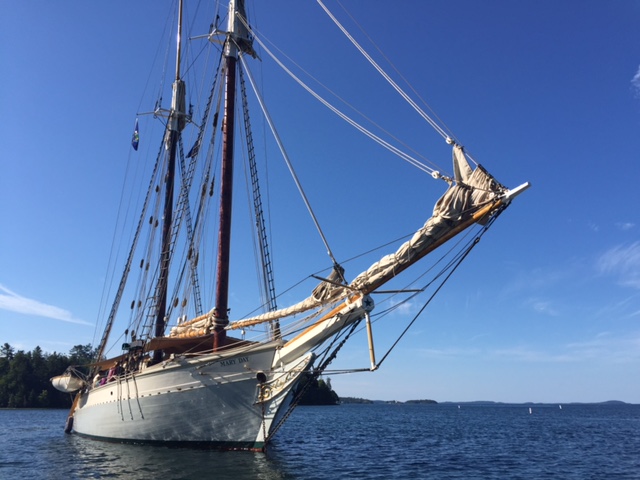 There’s a renewal of spirit as soon as we set sail on the Schooner Mary Day. The smell of wood mixes with the salty air as we glide out of that postcard-perfect Camden Harbor, gently crawling by the other historic schooners and yachts in the early morning fog. Goodbye mainland and the endless barrage of bad news, hello loons, anonymous pine-studded islands, and wide open water to bathe away all woes of modernity. I take deep gulps of the crisp air and breathe deeply.
There’s a renewal of spirit as soon as we set sail on the Schooner Mary Day. The smell of wood mixes with the salty air as we glide out of that postcard-perfect Camden Harbor, gently crawling by the other historic schooners and yachts in the early morning fog. Goodbye mainland and the endless barrage of bad news, hello loons, anonymous pine-studded islands, and wide open water to bathe away all woes of modernity. I take deep gulps of the crisp air and breathe deeply.
There’s 6 crew and 25 passengers from across America on our 3-night voyage, all under the more than capable helm of hirsute Captain Barry King. We’re asked to participate as much or as little as we like. My daughter and I jump at the opportunity to pull on the halyards of the main, joining many others in the group. The large sail rises, linked to a massive mast that still stands from the original 1962 design. With all sails up, the 90′ Mary Day is a beauty, as evidenced by all the motorboats that come by our side during the trip to take photos. We sail by the first of many lighthouses as Captain Barry bellows, “Porpoises on the starboard side,” only to watch the fins of their small gracefully arched backs break the water’s surface.
Maine’s vast shoreline is best appreciated from the water. The Camden Hills rise above the mainland, island upon island form a welcome mat to the sea, rimmed with granite and topped with pine. Often we pass islands where one fortunate soul owns the lone house, sailboat docked, ready for service whenever he or she pleases. But today, there are more porpoises, seals, and bald eagles flying overhead than boats on the water. I breathe in more of that heavenly air, lie down and look up at the sails. Life is good.
There’s a renewal of spirit as soon as we set sail on the Schooner Mary Day. The smell of wood mixes with the salty air as we glide out of that postcard-perfect Camden Harbor, gently crawling by the other historic schooners and yachts in the early morning fog. Goodbye mainland and the endless barrage of bad news, hello loons, anonymous pine-studded islands, and wide open water to bathe away all woes of modernity. I take deep gulps of the crisp air and breathe deeply.

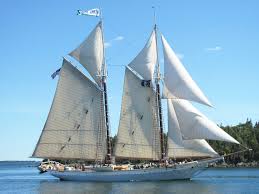 In 1936, an artist from rural Maine named Frank Swift had the wild and crazy idea of reinventing the American merchant sailing ship. Once essential in transporting lumber and granite along the Eastern Seaboard, fish from the Georges Banks, and fruit from the West Indies, these vessels were becoming obsolete by the 1930s. Swift knew full well that Maine’s 2500-mile stretch of jagged coastline, where long inlets form sheltered bays, was tailor-made for sailing. No other sport gives you the freedom to anchor in a pristine cove, hike on an untrammeled island, and sleep with a lighthouse beacon as your nightlight. So he went on a shopping spree, buying up old schooners with a vision offering travelers a new type of experience, windjamming. The business flourished and today there are now 9 ships in the
In 1936, an artist from rural Maine named Frank Swift had the wild and crazy idea of reinventing the American merchant sailing ship. Once essential in transporting lumber and granite along the Eastern Seaboard, fish from the Georges Banks, and fruit from the West Indies, these vessels were becoming obsolete by the 1930s. Swift knew full well that Maine’s 2500-mile stretch of jagged coastline, where long inlets form sheltered bays, was tailor-made for sailing. No other sport gives you the freedom to anchor in a pristine cove, hike on an untrammeled island, and sleep with a lighthouse beacon as your nightlight. So he went on a shopping spree, buying up old schooners with a vision offering travelers a new type of experience, windjamming. The business flourished and today there are now 9 ships in the 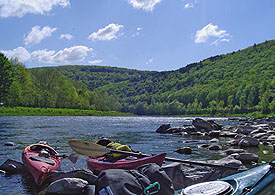 Less than a 2-hour drive from New York City is Sullivan County, the western region of the Catskills. Once the heart of the Borscht Belt, where resorts like Grossinger’s and Kutsher’s thrived in the 50s and the 60s, only to be abandoned in the 80s and 90s not long after the mega-hit movie, Dirty Dancing, hit the screens. Derelict buildings on properties the size of college campuses dotted Sullivan County and the region felt like the Pompeii of the Catskills. Today, the county is experiencing a comeback, with stylish new inns and resorts, as well as farm fresh restaurants popping up left and right. This resurgence, coupled with outdoor adventures and genuine affordability means there’s no better time to experience what’s in Manhattan’s backyard (without having to get on an overcrowded train to the Hamptons).
Less than a 2-hour drive from New York City is Sullivan County, the western region of the Catskills. Once the heart of the Borscht Belt, where resorts like Grossinger’s and Kutsher’s thrived in the 50s and the 60s, only to be abandoned in the 80s and 90s not long after the mega-hit movie, Dirty Dancing, hit the screens. Derelict buildings on properties the size of college campuses dotted Sullivan County and the region felt like the Pompeii of the Catskills. Today, the county is experiencing a comeback, with stylish new inns and resorts, as well as farm fresh restaurants popping up left and right. This resurgence, coupled with outdoor adventures and genuine affordability means there’s no better time to experience what’s in Manhattan’s backyard (without having to get on an overcrowded train to the Hamptons).  If Arizona is on your radar this coming year, consider the new
If Arizona is on your radar this coming year, consider the new 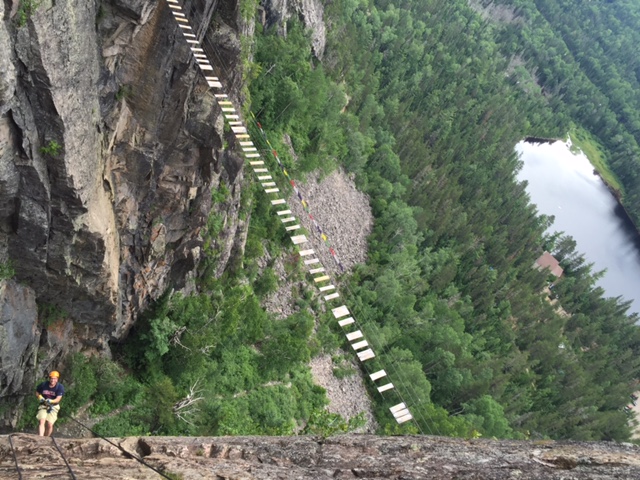 Just when I thought I had my fill of adventure in the Saguenay/Charlevoix region—biking, hiking, stand-up paddleboarding, sea kayaking, and whitewater rafting—I topped it all with this morning’s activity. Charlevoix is home to one of the few Via Ferratas in the world outside of the famous Dolomites. Using cables affixed to an 1187-foot rock face, we attached our carabiners and used iron rungs on the steep sections to clamber up the rock wall at
Just when I thought I had my fill of adventure in the Saguenay/Charlevoix region—biking, hiking, stand-up paddleboarding, sea kayaking, and whitewater rafting—I topped it all with this morning’s activity. Charlevoix is home to one of the few Via Ferratas in the world outside of the famous Dolomites. Using cables affixed to an 1187-foot rock face, we attached our carabiners and used iron rungs on the steep sections to clamber up the rock wall at 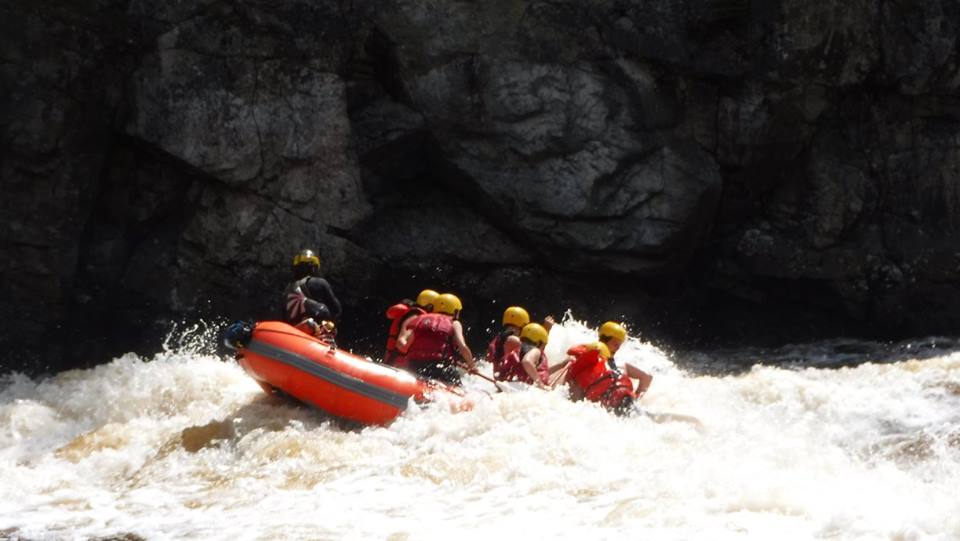 We woke early on the second day of our trip, packed up our belongings, and biked back to our car parked near the visitors center of Parc national de la Pointe-Taillon. Less than a 45-minute drive later, we were on the southeastern shores of Lac-Saint-Jean ready to stand-up paddleboard once the outfitter
We woke early on the second day of our trip, packed up our belongings, and biked back to our car parked near the visitors center of Parc national de la Pointe-Taillon. Less than a 45-minute drive later, we were on the southeastern shores of Lac-Saint-Jean ready to stand-up paddleboard once the outfitter